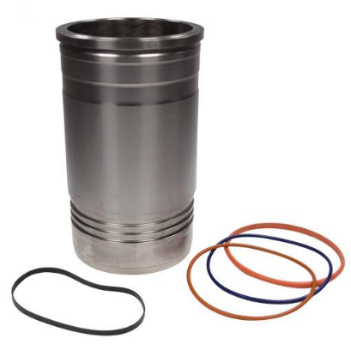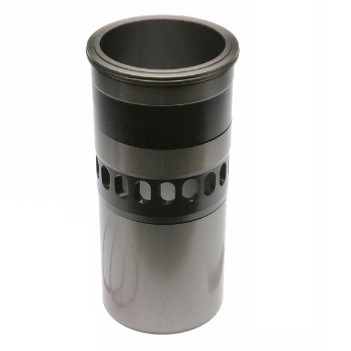Subsection 6.4.3 Cylinder Sleeve or Bore
Diesel engines use one of two types of cylinders.
In the first type, the cylinders are simply machined or bored into the block casting, making the block and cylinders one piece. This design if typically found in inexpensive engines.
In the second type, a machined steel sleeve, or cylinder liner, is pressed into the block casting to form the cylinder. Figure 6.4.5 provide examples of sleeved diesel engines. With either method, the bore or sleeve provides the engine with the cylindrical structure needed to confine the combustion gases and to act as a guide for the engine’s pistons. Sleeved liners can be easily replaced when they wear out.


In engines using sleeves, there are two types of sleeves, wet and dry. A dry sleeve is surrounded by the metal of the block and does not come in direct contact with the engine’s coolant (water). A wet sleeve comes in direct contact with the engine’s coolant.
Most diesel engines are multi-cylinder and typically have their cylinders arranged in one of two ways, an in-line or a V, although other combinations exits. In an in-line engine, as the name indicates, all the cylinders are in a row. In a V type engine the cylinders are arranged in two rows of cylinders set at an angle to each other that align to a common crankshaft. Each group of cylinders making up one side of the V is referred to as a bank of cylinders.
The volume enclosed by the sleeve is called the combustion chamber and is the space where the fuel is burned. In either type of cylinder, sleeved or bored, the diameter of the cylinder is called the bore of the engine and is stated in inches. For example, the bore of a 350 cubic inch Chevrolet gasoline engine is 4 inches.

